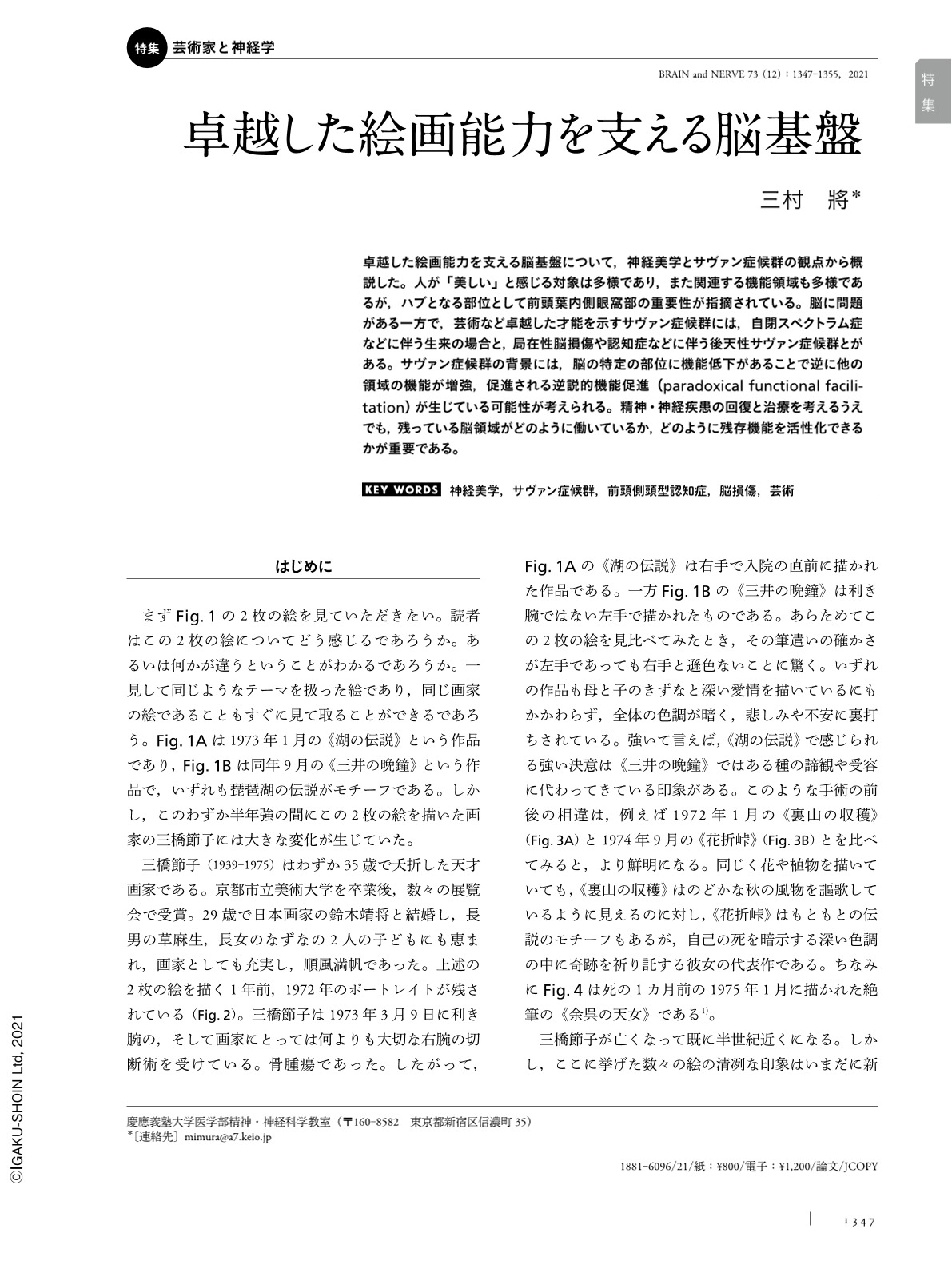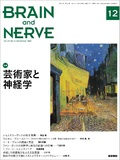Japanese
English
- 有料閲覧
- Abstract 文献概要
- 1ページ目 Look Inside
- 参考文献 Reference
卓越した絵画能力を支える脳基盤について,神経美学とサヴァン症候群の観点から概説した。人が「美しい」と感じる対象は多様であり,また関連する機能領域も多様であるが,ハブとなる部位として前頭葉内側眼窩部の重要性が指摘されている。脳に問題がある一方で,芸術など卓越した才能を示すサヴァン症候群には,自閉スペクトラム症などに伴う生来の場合と,局在性脳損傷や認知症などに伴う後天性サヴァン症候群とがある。サヴァン症候群の背景には,脳の特定の部位に機能低下があることで逆に他の領域の機能が増強,促進される逆説的機能促進(paradoxical functional facilitation)が生じている可能性が考えられる。精神・神経疾患の回復と治療を考えるうえでも,残っている脳領域がどのように働いているか,どのように残存機能を活性化できるかが重要である。
Abstract
In this review, the brain substrate underlying outstanding artistic ability was discussed from the viewpoint of “neuroaesthetics” and savant syndrome. Beauty is a multifaceted concept and is related to other multiple cognitive or affective functions, for which the medial orbitofrontal cortex is the hub and core region of the brain. The savant syndrome is known for outstanding and talented abilities including art despite otherwise severe brain dysfunction. The savant syndrome is usually classified into the essential savant observed in autism spectrum disorders and acquired savant often observed in dementia/degenerative diseases or focal brain damage. The paradoxical functional facilitation hypothesis may account for the savant syndrome, in which focal brain dysfunction may paradoxically enhance/facilitate functions in the other areas of the brain. This implication is important and useful in understanding the recovery/treatment of neuropsychiatric conditions.

Copyright © 2021, Igaku-Shoin Ltd. All rights reserved.


